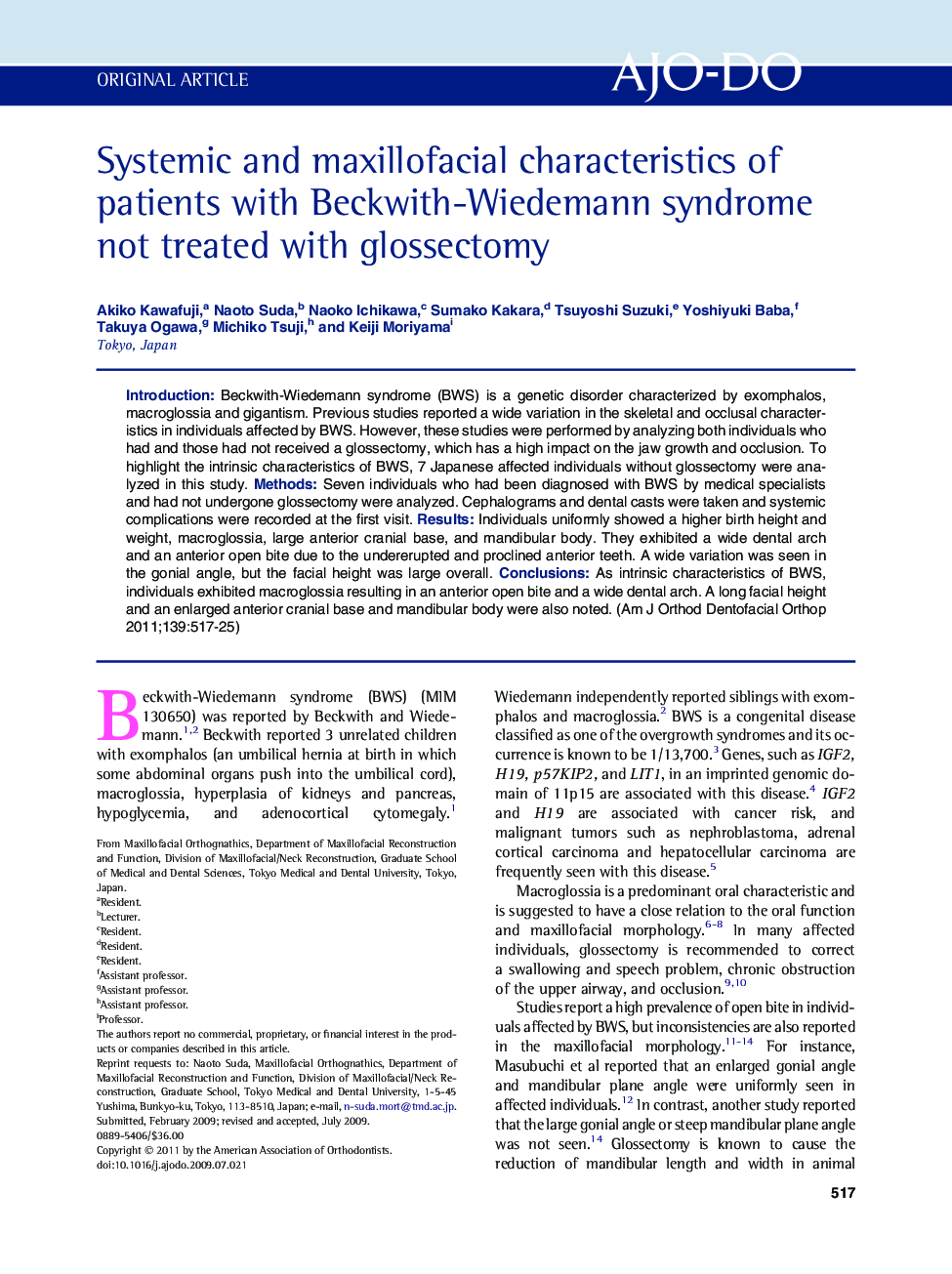| Article ID | Journal | Published Year | Pages | File Type |
|---|---|---|---|---|
| 3117708 | American Journal of Orthodontics and Dentofacial Orthopedics | 2011 | 9 Pages |
IntroductionBeckwith-Wiedemann syndrome (BWS) is a genetic disorder characterized by exomphalos, macroglossia and gigantism. Previous studies reported a wide variation in the skeletal and occlusal characteristics in individuals affected by BWS. However, these studies were performed by analyzing both individuals who had and those had not received a glossectomy, which has a high impact on the jaw growth and occlusion. To highlight the intrinsic characteristics of BWS, 7 Japanese affected individuals without glossectomy were analyzed in this study.MethodsSeven individuals who had been diagnosed with BWS by medical specialists and had not undergone glossectomy were analyzed. Cephalograms and dental casts were taken and systemic complications were recorded at the first visit.ResultsIndividuals uniformly showed a higher birth height and weight, macroglossia, large anterior cranial base, and mandibular body. They exhibited a wide dental arch and an anterior open bite due to the undererupted and proclined anterior teeth. A wide variation was seen in the gonial angle, but the facial height was large overall.ConclusionsAs intrinsic characteristics of BWS, individuals exhibited macroglossia resulting in an anterior open bite and a wide dental arch. A long facial height and an enlarged anterior cranial base and mandibular body were also noted.
